#Húsdrápa
Explore tagged Tumblr posts
Text

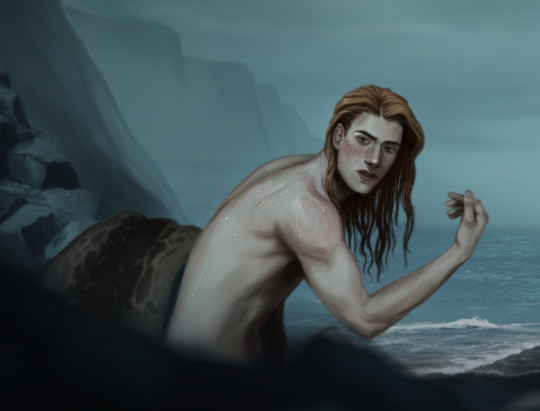
‘The Selkie’ by Jules McNamara
From the artist:
“ Selkies can be male or female, and are a shape-shifting creature from mostly Celtic Mythology, but can be found in Norse, Icelandic, and Faroese myth. There are contradicting accounts regarding how often they can walk on land, with popular tales saying once every seven years, but as with all folk tales, there is no right or wrong way to tell these tales.
“ The common denominator among selkie tales, though, is that they shed their seal-skin in order to walk on land. In some places where selkie myths are told, killing and eating seals is seen as an ultimate disrespect. Additionally, one of the ways birth defects were explained before the advent of modern medicine was to blame the fey, and sometimes children born with webbed digits were chalked up to be the offspring of selkies or their parents had disrespected a selkie. ”
47 notes
·
View notes
Text

Heimdall returns the Brisingamen to Freya (1846). By Nils Jakob Blommér.
Brisingamen is said to be the necklace (mainly made of amber) of the goddess Freyja in Scandinavian mythology. The Brisingamen was also carried by Thor when he disguised himself as Freyja to marry the giant Þrymr. The necklace was also in Loki's possession after he stole it from Freyja, as Húsdrápa tells us. When Freyja awoke without it, she asked Heimdal to help her look for it. Finally, they found the thief, who turned out to be Loki transformed into a seal. So Heimdal also turned into a seal and fought with Loki. After a long battle, Heimdal won and returned the Brisingamen to Freyja.
#Nils Jakob Blommér#norse mythology#asgard#freya#heimdall#romanticism#art#freyja#goddess of love#german mythology#scandinavian mythology#Brisingamen
9 notes
·
View notes
Text

Dans la poésie scaldique, un kenning souvent utilisé en référence aux dieux est « fils d'Odin ». Baldr et Thor sont tous deux désignés par ce kenning en particulier.
Dans le poème Haustlǫng (Long automne) du scalde norvégien Þjóðólfr de Hvinir, Thor est appelé burr Óðins, signifiant fils d'Óðinn.
Le même kenning est utilisé pour Baldr dans la strophe 7 du Húsdrápa par Úlfr Uggason :
Boðfróðr Freyr ríðr fyrst til borgar sonar Óðins á inum golli byrsta borg ok stýrir folkum.
« Le Freyr habile au combat chevauche en premier vers le bûcher funéraire du fils d'Óðinn (Baldr) sur le sanglier hérissé d'or (Gullinbursti) et mène les troupes. »
De plus, les Æsir sont également collectivement connus sous le nom d'ætt Óðins, signifiant famille/race d'Óðinn comme noté dans la strophe 13 de la saga de Hallfreðar. Ce kenning correspond au compte rendu de Snorri Sturluson sur Óðinn dans le Gylfaginning, où Óðinn est appelé l'Allfather parce qu'« il est le père de tous les dieux et des hommes… »
1 note
·
View note
Text
Loki only borrows her falcon skin cloak in the beginning of the myth where Thor gets his hammer stolen and he does not actually do that when he turns himself into a woman in that very same story. Odin also says that Loki turned into a cow and a woman and bore children in Lokasenna. It does not mention him ever using any cloak or skin of an animal to do that because no cow skin is ever mentioned being used in this context ever. Give me the stanza of the particular poem or prose section of Snorra Edda where Loki's ever stated to use anything other than her falcon skin cloak and then we can talk. Also this says nothing about Heimdall or Loki being able to turn themselves into seals because there is never a seal skin cloak of any sort mentioned either. Odin is never mentioned to be using the skin of an eagle or snake ever, so what about those examples as well? Sure they don't see him have sex with the horse, but they do see him turn into one. He only uses the falcon skin cloak because he cannot turn into birds, not because he can't turn into any animal at all. You said he cannot shape shift. And yet there are many examples of him shape-shifting into a woman and fully biologically becoming one to the point of being able to get pregnant. Odin also turns himself into a woman to be able to rape Rindr. They are not described as dressing up like women but literally becoming them. Also, you said that Loki cannot shape shift not that all animal-based shape-shifting in Norse mythology is done with animal skins. I just remembered about the story of Otter, where Ótr is actually a dwarf who turns himself into an otter and is never stated to have used the skin of an actual otter to be able to do that and in fact he doesn't turn back into a dwarf when he's killed either. He stays an otter and gold is placed on every inch of his pelt. Loki also turns himself into a salmon when he's trying to escape the Gods and he is never stated to use the skin of a salmon. Also, most translations I've read of that particular myth literally do state that he turned her into a nut not that he put her in one and I've never seen any actual scholar translate it that way. The only translation I've ever seen that described it that way was an amateur's translation
I've literally gone through arguably hundreds of papers by reputable scholars and videos that never ever implied that these Gods cannot shape shift and that they have to use some sort of objects to do it every single time outside of the context that Loki can't shape shift into a bird that can fly like a falcon. Remember that most of the jotnar can shape shift as well and they are definitely never implied to use any sort of skin of an animal. I would rather trust someone like Dr. Jackson Crawford or Dr. Matthias Nordvig than someone who is blatantly getting it wrong and can't cite their sources. Here's a link to a video by Jackson Crawford explaining misconceptions about Loki including his power set. https://youtu.be/icUElWDmFW8?si=IBC3cfrxOY1_82DK
My sources are as follows: Lokasenna (the poem where Loki insults all of the gods and goddesses and can be found in the Poetic Edda - stanza 23), the building of the Wall (which can be found in the Prose Edda), Þrymskviða(the story wherein Thor loses his hammer, which can also be found in the Poetic Edda), the myth of the theft of the Mead of Poetry (the story wherein Odin turns himself into an eagle and flies away with the mead of poetry and can be found in Skáldskaparmál in the Prose Edda.), the myth of Ótr (also found in the Prose Edda), The Rape of Rindr (The story wherein Odin turns himself into a woman and pretends to be a healer so he can force Rindr to sleep with him and can be found in the Prose Edda), and Húsdrápa (the story where in Loki and Heimdall fight as seals and can be found in the Poetic Edda). The translations I have available to me to use for citation are copies of Dr. Jackson Crawford's translation of the Poetic Edda, Carolyne Larrington's second edition translation of the Poetic Edda, and Anthony Faulkes translation of the Prose Edda.
You know, it kind of pisses me off when someone’s perception of norse mythology is based on Marvel/MCU. And it’s so easy to spot because they get basic facts wrong. No, Thor and Loki are not brothers, Loki is Odin’s blood brother. Loki’s last name is not «Laufeyson», Lauvøy was a Æsir maiden, and Loki’s father was a jotun called Fårbaute. Sif is not a goddess of anything, she is Thor’s wife. Loki can’t shapeshift, he and other gods borrow enchanted animal skins from Freya, goddess of love and magic.
4 notes
·
View notes
Text


Classic illustrations of Freyja requesting the Brísingamen from the dwarves. The Brísingamen, or Brising’s necklace, was attested in the Þrymskviða (Poetic Edda), in which the necklace breaks from around Freyja’s neck due to her anger and is then put around Thórr’s neck to disguise him as a bride, the Húsdrápa (skaldic poem partially preserved in Snorri’s Prose Edda), in which the Brísingamen is stolen by Loki on Óðinn’s orders and later retrieved by Heimdall, and the extended Saga of Olaf Tryggvason, as told in the pretty heavily christianized Flateyjarbók manuscript, which tells how Freyja buys the necklace from its dwarf owners by spending a night with each of them.
“Wrathful was Freyja, | and fiercely she snorted,
And the dwelling great | of the gods was shaken,
And burst was the mighty | Brisings' necklace:
‘Most lustful indeed | should I look to all
If I journeyed with thee | to the giants' home.’”
Þrymskviða - The Lay of Þrym, stanza 12.
“When this woman wanted to buy a golden necklace forged by four dwarves named Dvalinn, Alfrik, Berling, and Grer, she offered them gold and silver but they replied that they would only sell it to her if she would lie a night by each of them. She came home afterward with the necklace and kept silent as if nothing happened. But a man called Loki somehow knew it, and came to tell Odin. King Odin commanded Loki to steal the necklace, so Loki turned into a fly to sneak into Freyja’s bower and stole it.”
The Prose Edda of Snorri Sturluson, Arthur Gilchrist Brodeur translation (1916)
#good morning!#paganism#norse mythology#norse paganism#heathenry#art#mythology#folklore#history#norse gods#freyja#deities
93 notes
·
View notes
Text
Jormungandr

In Norse mythology, Jörmungandr(Old Norse: Jǫrmungandr, lit. 'huge monster',pronounced [ˈjɔ̃rmoŋˌɡɑndr]), also known as the Midgard Serpentor World Serpent(Old Norse: Miðgarðsormr[ˈmiðˌɡɑrðsˌormr]), is a sea serpent and the middle child of Loki and the giantess Angrboða. According to the Prose Edda, Odin took Loki's three children by Angrboða—the wolf Fenrir, Hel, and Jörmungandr—and tossed Jörmungandr into the great ocean that encircles Midgard.The serpent grew so large that it was able to surround the Earth and grasp its own tail.It is an example of an ouroboros. As a result of it surrounding the Earth, it received the name of World Serpent. When it releases its tail, Ragnarök will begin. Jörmungandr's arch-enemy is the thunder-god, Thor.
The major sources for myths about Jörmungandr are the Prose Edda, the skaldic poem Húsdrápa, and the Eddic poems Hymiskviðaand Völuspá. Other sources include the early skaldic poem Ragnarsdrápaand kennings in other skaldic poems; for example, in Þórsdrápa, faðir lögseims, "father of the sea-thread", is used as a kenning for Loki. There are also several image stones depicting the story of Thor fishing for Jörmungandr.
1 note
·
View note
Note
Hi, I was wondering if there was any knowledge on animals associated with Loki? My dad has a running joke that he's always watched by Ravens and associated that towards me because my interest in some modern Loki content. But I don't know that he realizes that's probably more associated with Odin because of hugin and munin. But it makes me wonder, is there an animal associated with him? That isn't linked to his sons animal nature
Hi!
Loki is a shapeshifter, so there are quite a few, though some are more commonly used as iconography by devotees than others. (Copying and pasting from this older post on symbols for Loki because I don’t really have anything new to add.)
Birds - Loki can shapeshift, but for some reason he borrows Freyja’s falcon cloak on occasion. For example, in Þrymskviða, he uses it to search for Mjolnir. He also has kennings associating him with crows (meinkráka, harm crow), hawks (barni öglis, hawk’s child), and vultures (gammleið, vulture’s path.)
Flies - In Skáldskaparmál,Loki transforms into a fly in an unsuccessful attempt to win a bet against the dwarves forging Mjolnir.
Goats - Goats are traditionally a symbol for Thor. However, some Lokeans like to make stealth references to the story in Skáldskaparmál where Loki ties his balls to a goat in order to entertain Skadi.
Horses - In Gylfaginning, Loki is commanded to keep a giant from finishing building a wall in time so the Aesir don’t have to pay him. Loki turns into a white mare to distract the giant’s work horse and gives birth to Sleipnir as a result. The Edda is ambiguous as to whether this was consensual or not, so use discretion when considering whether you find it appropriate to use as a symbol.
Salmon - Loki turns into a salmon in order to hide from the Aesir after the events of Lokasenna. Unfortunately, Thor catches Loki with his own net.
Seals - In a tragically mostly lost poem called Húsdrápa, quoted by Snorri in Skáldskaparmál, Loki steals Freyja’s necklace Brísingamen. Loki and Heimdall transform into seals and fight over it.
Snakes - Loki is the father of Jormungandr, the serpent that encircles the world. Additionally, when Loki is bound, Skadi hangs a venomous serpent above his head to torture him. In modern Western culture, snakes are usually considered very crafty (likely because of the serpent in Genesis.) They also transform and renew themselves regularly by shedding their skin, a very Lokean concept. However, it should be noted that the “Urnes Snakes” symbol popularized by the jeweler Trove of Valhalla is actually a modern design that, despite the company’s claim, does not originate from the Urnes stave church.
Wolves - Loki fathers Fenrisulfr. Another of his sons in turned into a wolf as a punishment. Finally, Loki is the blood brother of Odin, who’s heavily associated with wolves.
Foxes - Loki is never associated with foxes in the lore. However, foxes have long been trickster characters in our culture (see Aesop’s fables, Reynard, Br’er Fox, etc.) And because people associate tricksters with foxes, they associate Loki with foxes.
Spiders - Pretty much the same deal as with foxes. There isn’t solid evidence that Loki was associated with spiders historically, but spidery tricksters like Anansi and Charlotte have led modern devotees to see them as a Loki thing. A scholar named Anna Birgitta Rooth put forth the theory that the name Loki is related to Swedish locke (spider), but that theory didn’t gain much acceptance among academics.
As always, you’re not limited to attested associations, or associations that others share. If you see aspects of Loki in a different animal, it’s fine to use that in your practice as well.
- Mod E
98 notes
·
View notes
Text
volstagg: thor please stop bringing your baby brother on our group dates it's really weird
thor: but then he'd be lonely :(
sif: i mean you literally have to drag him along with us half the time i think he'd be okay with it
thor: no you don't understand. if i don't bring him along, he loses his grip on the "responsible one" status and starts doing reckless stuff
hogun: how do you mean?
thor: remember the seals?
fandral: sure is great to have your annoying baby brother along on our date this fine evening!
loki: on your what??????
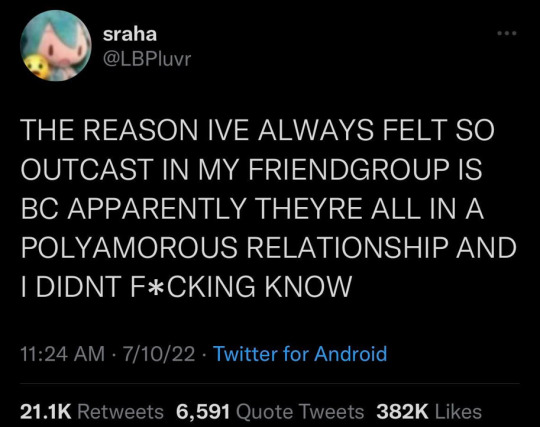

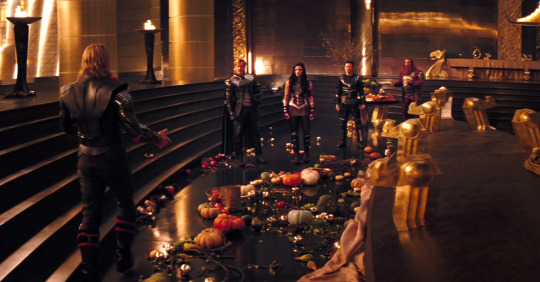

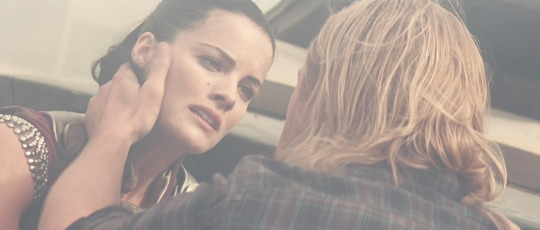



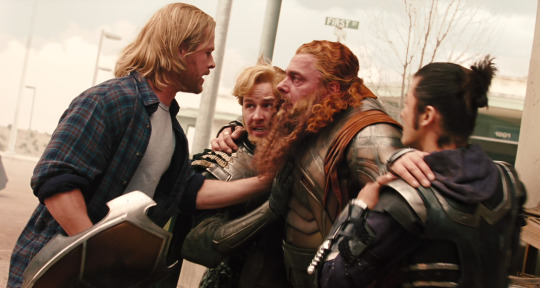
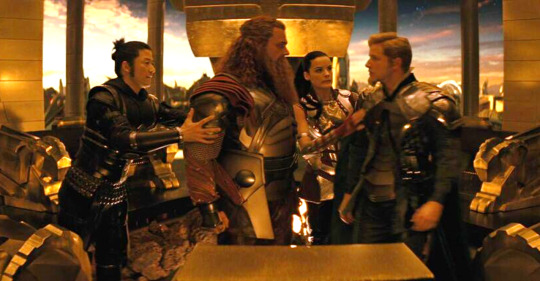
part1.jpng
#mcu#that's a reference to the húsdrápa btw#in which heimdallr helps freyja find her missing necklace which it turns out loki stole but loki is currently a seal#so heimdallr turns into a seal also in order to fight him#which was the obvious solution and not. idk. taking advantage of loki's sudden lack of opposable thumbs#the húsdrápa also includes baldr's funeral and thor's weird fishing trip in which he accidentally catches jörmungandr#with an ox's head as bait which is weird to me bc if jörmungandr is big enough to encircle the entire planet an ox should be nothing to him#or maybe hymir just has crazy big oxes#granted there are like four surviving versions of that story and hymir didn't even make it into all of them so who knows
353 notes
·
View notes
Photo

FREYJA
Freia (em norueguês: Frøya, em língua nórdica antiga: Freyja) é uma das deusas mais antigas na antiga religião germânica, da qual se preservaram numerosos relatos que a envolvem ou a descrevem, devido ao fato de que as fontes mais bem documentadas desta tradição religiosa foram transmitidas ou alteradas por historiadores cristãos medievais e em muitos casos escritas mais de um século e meio mais tarde. Ela é associada ao amor, fertilidade, beleza, riqueza, magia, guerra e morte.
É também cultuada em religiões neopagãs, como a Ásatrú.
Etimologia
Frey, Freya, Freia derivam de palavras germânicas cujo significado são "senhor" e "senhora" (em nórdico antigo: Freyja, também grafado Freya, Freja, Freyia, e Frøya) é a deusa mãe da dinastia de Vanir na mitologia nórdica.
Filha de Njord um mítico rei da Suécia e Skadi, o deus do mar, e irmã de Frey, ela é a deusa da sexualidade, da sensualidade, da fertilidade, do amor, da beleza, da atração, da luxúria, ouro , guerra e morte, da música e das flores.
Origens Edda Poética
Völuspá é o primeiro e um dos principais poemas da Edda poética. No poema Völva nos dá muita informação sobre os eventos futuros e passados ao deus Odin, Freia é citada brevemente no poema, sendo mencionada quando os deuses se reúnem para romper o acordo com o construtor das muralhas de Asgard. A deusa é citada ainda nesta composição como a noiva de Óðr.
É também a deusa da magia, da adivinhação, da riqueza (as suas lágrimas transformavam-se em ouro), da sabedoria e líder das valquírias (condutoras das almas dos mortos em combate).
As eddas mencionam que recebia metade das almas mortas em combate em seu palácio chamado Fólkvangr, enquanto que Odin recebia a outra metade em Valhala.
A origem do Seiðr e seu aprendizado pelos ases (Aesir) se atribuía a Freia.
De caráter arrebatador, teve vários deuses como amantes e é representada como uma mulher atraente e voluptuosa, de olhos claros, baixa estatura, sardas, trazendo consigo um colar mágico, emblema da deusa da terra, chamado Brisingamen.
Mitologia
Diz a lenda que ela estava sempre procurando, no céu e na terra, por Óðr, seu marido perdido, enquanto derramava lágrimas que se transformavam em ouro na terra e âmbar no mar.
Na tradição germânica, Freia e dois outros vanirs (deuses da natureza) se mudaram para Asgard para viver com os Aesir (deuses de guerra) como símbolo da amizade criada depois de uma guerra.
Usava o colar de Brisingamen, supostamente feito de ouro, o colar representava o Sol e o ciclo do dia e noite, de acordo com as notas de Saxão Gramático o colar estava entre os objetos dados aos deuses por Alberich. Em uma parte do poema Húsdrápa, na Edda em prosa (Skaldskaparmal) é relatado o roubo do colar por parte de Loki, colar este que era considerado um tesouro de grande valor e beleza, quando Freia deu-se conta, do desaparecimento de seu colar solicitou a ajuda de Heimdall.
Depois de uma longa batalha, Heimdall vence Loki, retornando vencedor e devolvendo o colar a deusa. É um relato importante já que marca um o ódio mútuo que ao futuro, os destinará a combater-se e derrotar um ao outro no final do Ragnarök.
Este mito supracitado se dá no mar e talvez esteja relacionado com a origem de um dos nomes de Freia (Freia, Freja, Froya, etc.) neste caso "Mardoll" o "brilho do mar" sendo o brilho aqui o do colar roubado por Loki (Brisingamen) já que brisinga que significa brilhante, cintilante, flamejante.
No próprio nome de Heimdall, a palavra dallr (luz) e é o masculino de döll e "heim" terra. Esta é talvez uma das histórias que se perderam na busca de Freia por seu esposo.
Freia frequentemente conduzia um carro de guerra, puxado por um par de Linces. No Gilfaginning há relatos que conduziu este carro até o funeral de Balder.
Os felinos são sagrados para Freia, assim como os corvos e os lobos para Odin. Freia compartilhava os mortos de guerra com Odin. Metade dos homens e todas as mulheres mortos em batalha iriam para seu salão Fólkvangr.
7 notes
·
View notes
Text
Loki Myth p1: Heimdallr
For a little while now Loki has been poking me to learn and to discuss some of his lesser known stories such as those with Heimdallr. In this passage, I’m going to talk about what little is known about Loki’s interactions with him.
Heimdallr, the watchman of the gods and the son of nine mothers, is an interesting character. There are only three known interactions between Loki and Heimdallr.
The first interaction comes from Húsdrápa, a poem in the Prose Edda that is preserved in pieces. The first section that mentions Loki and Heimdallr is as follows:
Heimdallr er eigandi Gulltopps. Hann er ok tilsækir Vágaskers ok Singasteins. Þá deilði hann við Loka um Brísingamen. Hann heitir ok Vindlér. Úlfr Uggason kvað í Húsdrápu langa stund eftir þeiri frásögu, ok er þess þar getit, at þeir váru í selalíkjum. Hann er ok sonr Óðins.
Heimdall is the owner of Gulltop. He is also a visitor to Vagasker and Singastein; on that occasion he contended with Loki for the Brisingamen. He is also known as Vindhler. Ulfur Uggason composed a long passage in Húsdrápa based on this story, and it is mentioned there that they were in the form of seals.
Snorri then quotes a stanza of said 'long passage’.
64. Ráðgenginn bregðr ragna rein at Singasteini frægr við firnaslægjan Fárbauta mög vári; móðöflugr ræðr mæðra mögr hafnýra fögru, kynni ek, áðr ok einnar átta, mærða þáttum.
Renowned defender of the powers’ way, kind of counsel, competes with Farbauti’s terribly sly son at Singasteinn. Son of eight mothers plus one, mighty of mood, is first to get hold of the beautiful sea-kidney. I announce it in strands of praise.
It all boils down to this: Heimdallr and Loki, while in the form of seals, fight over Freyja’s necklace known as Brisingamen. That is it. That is all that is known about this interaction between Loki and Heimdallr. We do not know why Loki is trying to get the necklace nor why Heimdallr is the one fighting him for it and not Freyja. It is important to note that this is not the only story in which Loki takes Brisingamen, but they are thought to be two different occasions.
The second interaction, which is extremely short and more-or-less-meaningless, comes from Lokasenna in the Poetic Edda. Lokasenna translates to Loki’s Flyting, which is basically a old time rap-battle where insult are traded. The scene is this: everyone is at a feast thrown by Aegir and drinking. Many of the important people are there including Odin, Sif, Tyr, Bragi, Idunn, Njord, Skadi, Freyr, Freyja, and Heimdallr. Thor is not there for the beginning of the story, but he comes in later. Everyone was having a great time, but Loki got jealous and killed someone. The gods drive Loki away, but he soon threatens his way back into the hall. Loki then precedes to insult everyone there and lay bare all their secrets and faults. It is interesting to note that a good deal of the things that Loki mentions are not mentioned in other places. At one point Heimdallr steps and the following is Loki and his interaction:
Heimdall spake:
47. “Drunk art thou, Loki, | and mad are thy deeds, Why, Loki, leavst thou this not? For drink beyond measure | will lead all men No thought of their tongues to take.”
Loki spake:
48. “Be silent, Heimdall! | in days long since Was an evil fate for thee fixed; With back held stiff | must thou ever stand, As warder of heaven to watch.”
Heimdallr basically says, “Loki, knock it off. You’re drunk. Go home because you don’t know what you’re saying.” Loki response with, “Shut up! You don’t have any hardships. You don’t do anything else but watch.” And that is the end of the second interaction of Loki and Heimdallr. It is not much, and it is not very meaningful.
The third and final interaction between Loki and Heimdallr is the best known of the three. This interaction takes place in Ragnarök. Ragnarök itself is a large story; the entirety of which I am not going to tell now. The important things to know are these; the world as we know it is ending and will be remade (more-or-less), and the gods are all battling their enemies. Heimdallr and Loki both have important parts to play in Ragnarök. Heimdallr will blow his horn called Gjallarhorn, warning the gods of the beginning of Ragnarök. Loki will break free from his chains and captain the ship called Naglfar or Nail-Ship (a ship made from the finger- and toenails of the dead. The crew of this ship are giants. The interaction between Loki and Heimdallr is boiled down to this line in the Prose Edda (translated by Jesse L. Byock); “Loki will battle with Heimdall, and they will be the death of each other.” And this ends their last interaction.
Loki is one who makes many enemies. The list of people who want to kill him is long. In my opinion, the fact that it is Heimdallr who Loki fights with, speaks volumes of what their relationship must be. However, we see almost nothing of their relationship. Loki and Heimdallr are seen fighting over Brisingamen (Freyja’s necklace); sure, but we do not know why this is happening, how bad the fighting truly is, nor the outcome of the fight. Loki does make a comment to Heimdallr in Lokasenna, but it’s hardly the worst thing that Loki says (and he does say some pretty harsh things) at this time. Many people assume that Heimdallr and Loki are mortal enemies, but besides them killing each other in Ragnarök, there is not enough information to truly support or reject this idea.
Loki Introduction Post
6 notes
·
View notes
Photo

Freyr
Freyr is the primary god of fertility of the the family of the Vanir, A deity of the Dumezilian third function(fertility,fecundity). He is the son of Njord and the brother of Freya. About Freyr, Snorri Sturluson informs us: “He is ruler of rain and sunshine and thus of the produce of the earth, and it is good to pray to him for prosperity and peace. He also rules of the wealth of men”. The pig and the stallion are his favorite animals.
He lives in Alfheimr(”World of the elves) and owns the wonderful boat called Skidbladnir and the boar Gullinborsti. His wife is the Giantess Gerdr. He Obtained her hand from her father Gymir, in exchange for his sword. Because he no longer had this sword during the apocalyptic battle, Surtr, the fire giant slew him.
Freyr is also called Yngvi and is the ancestor of the Ynglingar. In the British Isles he is known as Ing. In the euhemeristic interpretation of the Ynglinga saga, Freyer is presented as the king of Sweden living in Uppsala, the husband of Gerdr and father of Fjolnir. Peace and prosperity reigned during his time, which is why he was worshiped after his death. He is called “protector of the gods” and “ruler of the hosts of the gods”; in “Húsdrápa” he is said to rule the armies. Freyr is said to have gotten his hall Álfheimr as a tooth-gift. This association of Fro Ing with the alfs shows a side of his being which is not often called upon: the mound-god, the lord of the dead who still live within their barrows. As mentioned earlier, his earthly avatars were worshipped within the mound, just as the alfs were. Through his role as god of the barrow and fro of Alf-Home, Fro Ing is also tied to the living might of our fore-gone kin and to the inheritance of udal lands. In the sagas, his friendship preserves the lands of his followers; but when his wrath is roused, he drives men from their lands. Freyr and his father Njördhr are both called upon as the givers of wealth, as described both in Gylfaginning and in Egils saga. He is also said to have might over “rain, sunshine, and the fruitfulness of the earth.” Freyr’s Rune is Fehu.
Works of prosperity and wealth are best with him, as well as blots to unarmed combat and sexual understanding. As one of the the Vanir, he is versed in magic and witchcraft.
15 notes
·
View notes
Text
Permalink for part 1: https://thorraborinn.tumblr.com/post/668312297163374592/how-to-find-the-gods-in-text
Part 2:
But Finnur says that Grettir Ásmundarson refers to him, and it didn't show up here. Probably means the project didn't get to that part yet, so it's not turning up in the search results. Not to worry. Click on "Skalds" on the left column menu and search for Grettir.

Which shows us his poems:

They're obviously using a different classification system here than Finnur Jónsson did. You could go and double-check the Skjaldedigtning and see specifically which poem it is (rather than "2" in Finnur's shorthand), but remember it was the seventh verse, and only one of these goes up to a seventh one. Click Lausavísur to expand it.
Lausavísur means individual verses (vísur) not part of a big poem, so they're just things he said on the spot. Since they're not part of a single cohesive poem, they don't have to stay in order. Turns out, the editor for the Skaldic Poetry Project disagreed with Finnur's ordering and changed it up. Doesn't matter though, because we can just ctrl+f it. Instead of choosing a verse, just click "Introduction and information about text" and it will give you the whole thing.

Sure enough, "The new edition is unavailable. This text is from an old edition."
But wait a sec, we're still missing something. These are all the times the actual name "Heimdallr" shows up. Norse poets famously do not only refer to people and things by their actual names. Fortunately the SPP has a kennings index. Click "kennings" on the left. Click the "named referents" button and search:

And that will send us right back to the poem Húsdrápa:

Do keep in mind the possibility that it's missing some, in poems that haven't been processed by the project yet. That's why it's important to check Snorri for kennings and search those. Some of these might just slip through the cracks, I don't know of a systematic or foolproof way to get everything.
Okay, we're coming up on the end here. We're gonna finish up with something that's a little messier but could have pulled almost all of this up for us right away if we'd started with it (there's reasons not to do that though).
https://corpus.arnastofnun.is/ is a corpus search tool that will search a huge database of Icelandic texts for any string of text. The interface is in Icelandic but there isn't much there that you need to know.
Since Icelandic is a heavily inflecting language, it'll let you put in a word and automatically generate inflections ("Sækja orðmyndir"). Don't do that. We're working with Old Icelandic, and it's not set up for that, though it will still search it. Furthermore, Heimdallr inflects weirdly, which was alluded to when Finnur Jónsson talked about the variants of the genitive. If you were searching "Lofn" or "Frigg" or "Óðinn" it would be fine, but Heimdallr is too weird a word, so we'll have to do it manually. I honestly don't know how to tell you to figure this out on your own. For most words, you can search them in Modern Icelandic on bin.arnastofnun.is and then maybe just shave the -ur down into a -r, but still, Heimdallr is too weird a word. I'm just gonna give it to you. I'm putting this in the search field: "Heimdallr Heimdall Heimdalli Heimdallar Heimdalls Heimdalr Heimdal Heimdali Heimdalar Heimdals Heimdallur Heimdalur" (the order doesn't matter).
("Hreinsa" means clear. It's positioned like it might be a search button, but it is not. Don't click it. "Leita" is the search button. Don't worry about Orð 2 ('word 2')).

The check boxes are for different collections. We want "fornrit" (pre-modern literature; eddas, other poetry, sagas) for sure. You can search everything by checking "allir flokkar" but it's gonna turn up modern things and even blogs and stuff, and if you don't know Icelandic it might be hard for you to sort out what's what when you get the results.

A lot of this is stuff we already knew, but not all of it. There's Heimskringla which we should have suspected, but hadn't turned it up yet, and all the mentions in Snorri. There's the poems we already knew -- Húsdrápa, Lokasenna, Völuspá. But it also reminds us about Rísgþula (Finnur Jónsson's entry said 'confer Rígsþula' but didn't really list it, because it's in the prose intro, not the poem). You now know to check Landnámabók, though it turns out to be the verse by Grettir Ásmundarson that we already found.
wtf is "sogubrot" though? If you click it, it brings this up:

Sögubrot af nokkrum fornkonungum í Dana ok Svíaveldi. Google that shit. You'll find Wikipedia, which will find you an English translation. I'm not gonna go into the content of this or anything else but once you've got a title it shouldn't be hard to figure out what to do from there.
If you need help finding an English translation of a saga (or a translation into any language), the Icelandic National Library has you covered, just go right here: https://sagas.landsbokasafn.is/?ui-lang=en
Anyway, this concludes our lesson. If I skipped over anything or should have included a screenshot where I didn't let me know and if someone's trying to follow along and gets stuck let me know.
How to find the gods (in text)
Someone commented on one of my recent posts wondering what texts a certain figure comes up in. It's actually not terribly difficult to figure that out if you know what search tools are available, and don't mind that the interfaces might not be in English.
This is actually a lot easier with Old Icelandic words that aren't names, because the Dictionary of Old Norse Prose isn't good for looking for proper nouns. If you were looking for friðr or megin or something, that would be a much more useful tool than it is for gods' names.
Eventually there will be two big searchable corpora, one for prose and one for poetry, but those are both in progress and it will be some time before they're done.
On request of @hildshall I'll be showing you how to find every reference to Heimdallr in Norse literature, to the best of my ability and the ability of the tools we have available. I won't cover runic inscriptions because learning to use Rundata properly is a whole other beast, though most people should be able to figure out the simplified interface of Runor (and find the Saltfleetby Spindle Whorl). I'm also only doing this for the name "Heimdallr," not his other names Gullintanni, Hallinskiði and Vind(h)lér. These names come from Gylfaginning and Skáldskaparmál, and if you want to be sure you caught everything you have to repeat the process with those.
Super long post in two parts.
Keep reading
55 notes
·
View notes
Note
Hey V! I have been playing around with the idea of starting to pray to Rán and/or Jörmungandr. Because the sea and ocean have called me lately. Any good place to start?
In the Edda there is the story of Helga called Helgakvitha Hundingsbana, which mentions Aegir, Ran, and their daughters.
Northern Paganism is tends to be 99% UPG but it’s an okay start to see how other people view Ran. Aegir, her husband is often seen as friendly, especially since he hosted the party that Lokasenna takes place in, whereas Ran is more dangerous. I assume it could be alright to say Aegir is a god/jotunn of friendlier seas, where Ran is the sea that tosses and turns.
North Paganism just briefs that Aegir hosts parties and Ran is his husband. Ran is interpreted to mean “Robbery” such as the sea robs all sorts of things, from lives to boats and cargo, etc.
GrumpyLokeanElder briefs Ran and potential offerings, as well as cites where she appears in Eddas and poems.
Her main symbol is a net and in Chapter XIV of Volsunga, Loki captures teh dwarf Advari with the net. It was also summarized in The Children of Odin, 8. The Dwarf’s Hoard and the Curse That it Brought
Fuck Yeah Norse Mythology covers a few of her kennings.
Jormungandr is a bit tricky since he’s not regarded as a god, and his worship is a modern thing.
Lokavinr made “A Comprehensive List of Loki’s Children”
GLE’s “Is Jorm a god?” to which the answer is basically a long “kinda” and “it depends”
GLE’s Honoring Loki’s Children, has offerings and such
Voluspa mentions Jormungandr in Ragnarok, that his writhing body causes the sea to go nuts.
Fuck Yeah Norse Mythology has a rather nice comprehensive list of where Jormungandr is mentioned throughout bits of history and poems.
þórsdrápa is a poem that mentions Jormungandr and confirms him as Loki’s son. The link I provided is both the poem as well as a lengthy discussion for kennings, meanings, and more.
In Gylfaginning, Thor is challenged by Útgarða-Loki (not the same as Loki) to lift a cat. The cat turns out to actually be Jormungandr in disguise.
Húsdrápa tells about the fight between Thor and Jormungandr and other bits.
Mostly just read up on what you can, but there isn’t a whole lot.
Look into other people who worship Ran or Jorm. I have my page for Jormungandr, but I don’t yet work with Ran.
Also ! I found this wonderful site that has the original Norse Transliterations of sagas and poems, as well as translates them into other Scandanavian languages, such as Swedish !
1 note
·
View note
Text
That's a very interesting one :D
Húsdrápa, a poem partially preserved in the Prose Edda (the not rhyming sister of the Poetic Eda), relates the story of the theft of Brísingamen by Loki. One day when Freyja wakes up and finds Brísingamen missing, she enlists the help of Heimdallr to help her search for it. Eventually they find the thief, who turns out to be Loki who has transformed himself into a seal. Heimdallr turns into a seal as well and fights Loki. After a lengthy battle at Singasteinn, Heimdallr wins and returns Brísingamen to Freyja.
So yeah, they turned into seals and fought over a necklace! In my opinion it's hilarious
Just wanted to make a reminder because of a few recent events (mostly irl but also here), and I wander to make things clear.
If you ever come across this blog, for one reason or another, you are 200% welcomed here.
Feeling down or lonely, just needing someone to talk to? I'm here for you. To comfort or to listen, or just if you need a distraction, no questions asked.
Want to tell someone about your interests or something you're making or anything like that but feeling like no one would care? I'm here for you. I'll listen, I'll ask questions if you want, and I will never ever judge enthusiasm or being interested in something 'out of the ordinary'.
Just bored and want to hear some stories or myths or play a game or tell some jokes? I'm here for you. Always glad to make new friends.
Whether something serious you need to get off your chest, or something light like if you heard a nice joke or cool fact and wanna tell someone; I. Am. Always. Here. For. You.
Inbox is wide open, anon is on, you are always always invited to my dms, and feel free to tag me in whatever.
No need to be a mutual or a follower, the only need is that you want to talk to someone <3
I truly hope, with all my heart and soul, that whoever is reading this gets to have a day as beautiful and as wonderful as they are. Because you deserve it.
I love you all. Every single person. If we've exchanged one word or one million words.
You are loved and appreciated. Remember that. And maybe come talk to me if you aren't feeling it.
Previous pinned post here
39 notes
·
View notes
Text
The other thing is, I think Heimdall actually has aspects of a fertility god: fathering the three classes of humans, appearing as a seal (who come onto land to mate) to retrieve the Brisingamen (Freyja's necklace), having lain with Gefjun/Freyja, his symbol being a ram. I'm reading an article about the Húsdrápa poem and it's making me realise just how much Heimdall could have a progenitor/fertility aspect.
(much like a, you know, Sky Father?)
Pure speculation, of course...but what if Proto-Germanic *Tiwaz developed into both Tyr and Heimdall, each taking on different aspects of *Tiwaz?
5 notes
·
View notes